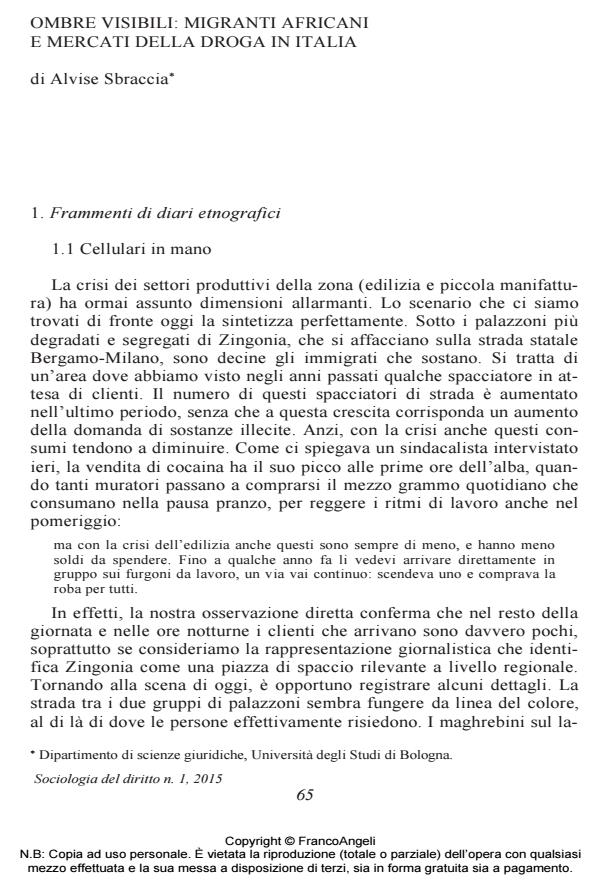Ombre visibili: migranti africani e mercati della droga in italia
Titolo Rivista SOCIOLOGIA DEL DIRITTO
Autori/Curatori Alvise Sbraccia
Anno di pubblicazione 2015 Fascicolo 2015/1
Lingua Italiano Numero pagine 23 P. 65-87 Dimensione file 184 KB
DOI 10.3280/SD2015-001003
Il DOI è il codice a barre della proprietà intellettuale: per saperne di più
clicca qui
Qui sotto puoi vedere in anteprima la prima pagina di questo articolo.
Se questo articolo ti interessa, lo puoi acquistare (e scaricare in formato pdf) seguendo le facili indicazioni per acquistare il download credit. Acquista Download Credits per scaricare questo Articolo in formato PDF

FrancoAngeli è membro della Publishers International Linking Association, Inc (PILA)associazione indipendente e non profit per facilitare (attraverso i servizi tecnologici implementati da CrossRef.org) l’accesso degli studiosi ai contenuti digitali nelle pubblicazioni professionali e scientifiche
L’articolo è dedicato all’analisi delle modalità di coinvolgimento dei migranti africani nel mercato delle droghe illegali in Italia. In particolare, il lavoro si concentra sulle articolazioni più basse di questo mercato, proponendo una lettura del posizionamento di questi immigrati sul versante della domanda (come consumatori) e dell’offerta (come spacciatori). Pur considerando le produzioni statistiche disponibili sul versante dei processi di criminalizzazione e su quello dei servizi di assistenza, il contributo è incentrato sui riscontri empirici raggiunti dall’autore in diversi anni di ricerca qualitativa sul campo. I brani proposti nella prima parte dell’articolo si riferiscono infatti ad esperienze etnografiche nei contesti dello spaccio e del consumo di strada, a ricostruzioni bi ografiche di soggetti condannati per reati di droga, a interviste e colloqui realizzati con addetti ai lavori e tecnici che insistono nel campo del controllo e del trattamento terapeutico. Questi testi offrono spunti pregnanti da un punto di vista descrittivo e interpretativo. La seconda parte dell’articolo è pertanto dedicata a ricondurli ad alcuni quadri teorici socio-criminologici, nel tentativo di proporre una configurazione del campo.
Parole chiave:Drugs - Criminalisation - Market - Immigration - Prison - Control
Alvise Sbraccia, Ombre visibili: migranti africani e mercati della droga in italia in "SOCIOLOGIA DEL DIRITTO " 1/2015, pp 65-87, DOI: 10.3280/SD2015-001003